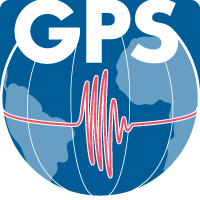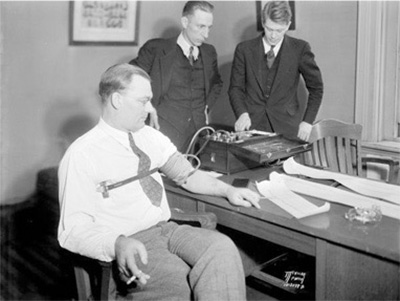Since the dawn of civilization, mankind has sought ways to distinguish truthfulness from lying in those individuals suspected of wrongdoing.
Various inventive techniques for the verification of truth and the detection of deception have been tried over the centuries, many of these being ridiculous and cruel. Despite their primitiveness, each technique was based on the assumption that some form of physiological reaction occurred within a person when confronted with certain stimuli regarding a specific event under investigation, and that this physiological reaction would, in turn, be manifested in certain recognizable external symptoms that were indicative of honesty or deception.
In ancient China dry rice was commonly utilized as a lie detector. The Chinese believed that salivation ceased at times of emotional anxiety such as a strong fear. An "examiner" had a suspect hold a handful of dry rice in his mouth while he was asked a series of questions. After questioning, the rice was examined. If it was dry, the suspect was declared to be a liar. As was assumed then – and is currently supported by more recent evidence – the nervous tension created by lying slowed or blocked the flow of saliva.
Spartan young men were required to pass the selection criteria before being admitted to certain schools in ancient Sparta. The young men were ordered to stand on the edge of a cliff, and were asked if they were afraid. The answer was always negative, however its integrity was determined by the men’s complexion. It was concluded that the pale young men lied and they were pushed from the cliff.
Around 1500 BC Indian priests saturated a donkey's tail with carbon residue from an oil lamp and placed the animal in a dark tent. The suspects were sent into the tent and told that pulling the "magic" donkey's tail would reveal the liar (if a guilty man pulls his tail, the donkey will bray). When the suspects came out, the priests examined their hands. Those with clean hands had not touched the donkey's tail. It was assumed that this was due to many suspects’ fear of their guilt being discovered, proving they were liars. Variations of this test were also used by Chinese and Arabs.
African tribes have utilized their own method of detecting a guilty person. While performing a special dance around a suspected individual, a sorcerer intensely sniffed him. The "investigator" made a conclusion whether the suspect committed the crime based upon the intensity of his body odor.
During the Middle Ages a suspect's pulse rate readings were collected for determining his or her guilt. This method was employed for exposing unfaithful wives and their lovers. The testing technique was very simple. A trained individual placed a finger on a wrist of a woman suspected of infidelity, while mentioning names of the men, who could have had an intimate relationship with her. The examinee's pulse accelerated when she heard and, consequently, reacted to the name of her lover.
In West Africa persons suspected of a crime were made to hold and pass a bird's egg to one another. The person breaking the egg was considered guilty, based on the notion that his or her tremor-eliciting nervousness was to blame.
Polygraphy—the science of truth verification based upon psychophysiological analogues—is only about 100 years old.
The effects of questioning
In 1878, science first came to the aid of the truth seeker through the research of Italian physiologist Angelo Mosso. Mosso used an instrument called a plethysmograph in his research on emotion and fear in subjects undergoing questioning and he studied the effects of these variables on their cardiovascular and respiratory activity. Angelo Mosso was the first scientist to report on experiments in which he observed that a person's breathing pattern changed under certain stimuli, and that this change, in turn, caused variations in their blood pressure and pulse rate.
Blood pressure and pulse rate
The first use of a scientific instrument designed to measure physiological responses for this purpose came in 1895 when Italian physician, psychiatrist and pioneer criminologist Cesare Lombroso modified an existing instrument called a hydrosphygmograph and used it to measure the physiological changes that occurred in a crime suspect's blood pressure and pulse rate during a police interrogation. Lombroso is the first person to have used the instrument successfully as a means for determining truthfulness from deception in crime suspects. On several occasions, he used the hydrosphygmograph in actual cases to assist the police in the identification of criminals.
Ink recordings
In 1906, Sir James Mackenzie devised the clinical ink polygraph with the help of Lancashire watchmaker and Sebastian Shaw. This instrument used a clockwork mechanism for the paper-rolling and time-marker movements and it produced ink recordings of physiological functions that were easier to acquire and to interpret. Interestingly, it has been written that the modern polygraph is really a modification of Dr. Mackenzie's clinical ink polygraph.
Respiratory symptoms of lying
In 1914, Italian psychologist Vittorio Benussi discovered a method for calculating the quotient of the inhalation to exhalation time as a means of verifying the truth and detecting deception in a subject. Using a pneumograph—a device that recorded a subject's breathing patterns—Benussi conducted experiments regarding the respiratory symptoms of lying. He concluded that lying caused an emotional change within a subject that resulted in detectable respiratory changes that were indicative of deception.
Systolic blood pressure test
Dr. William Moulton Marston, an American attorney and psychologist, developed the discontinuous systolic blood pressure test in 1915 which would later become one component of the modern polygraph. Dr. Marston's technique used a standard blood pressure cuff and a stethoscope to take intermittent systolic blood pressure readings of a suspect during questioning for the purpose of detecting deception.
The polygraph
In 1921, John A. Larson, a Canadian psychologist employed by the Berkeley Police Department, in California, developed what many consider to be the original "lie detector" when he added the item of respiration rate to that of blood pressure. He named his instrument the polygraph—a word derived from the Greek language meaning "many writings"—since it could read several physiological responses at the same time and document these responses on a revolving drum of smoked paper. Using his polygraph, Larson was the first person to continually and simultaneously measure changes in a subject's pulse rate, blood pressure and respiratory rate during an interrogation. His polygraph was used extensively, and with much success, in criminal investigations.
Leonarde Keeler
In 1925, Leonarde Keeler, who had gained firsthand experience in polygraph interrogations as a result of working with Larson at the Berkeley Police Department, worked to devise a polygraph that used inked pens for recording the relative changes in a subject's blood pressure, pulse rate and respiratory patterns, thus eliminating the need for smoking the paper and then preserving it with shellac.
In 1926, the Keeler Polygraph came on the market as the new and improved lie detector, an enhanced version of John A. Larson's polygraph.
In 1938, Leonarde Keeler further refined the polygraph when he added a third physiological measuring component for the detection of deception — the psychogalvanometer— a component that measured changes in a subject's galvanic skin resistance during questioning, and in doing so, thus signaling the birth of the polygraph as we know it today.
In 1939, Leonarde Keeler patented what is now understood as the prototype of the modern polygraph — the Keeler Polygraph. Today, Leonarde Keeler is known as the father of polygraph.
In 1948, Leonarde Keeler founded the world's first polygraph school— the Keeler Polygraph Institute — in Chicago, Illinois.
CQT
Between 1945 and 1947, John E. Reid, a lawyer from Chicago, Illinois, developed the polygraph technique called CQT. The Reid technique was a major breakthrough in polygraph methodology. Additionally, Reid was the first examiner to use movement sensors to detect in any movement during an examination.
Numerical evaluation
In 1960, Cleve Backster, developed the Backster Zone Comparison Technique (ZCT) which is often used in the modern polygraph world till this very day. Cleve Backster also introduced a quantification system of chart analysis, thus making it more objective and scientific than before. This system for the numerical evaluation of the physiological data collected from the polygraph charts has been adopted as standard procedure in the polygraph field today.
Use of computers
Since 1962, the study of the use of computers in the physiological detection of deception has progressed through several phases.
During the 1980s, research was conducted on computerized polygraph at the University of Utah by Drs. John C. Kircher and David C. Raskin and, in 1988, they developed the Computer Assisted Polygraph System (CAPS), which incorporated the first algorithm to be used for evaluating physiological data collected for diagnostic purposes.
In 1992, the polygraph made its official entrance into the computer age.
In 1993, statisticians Dr. Dale E. Olsen and John C. Harris at Johns Hopkins University Applied Physics Laboratory, in Maryland, completed a software program called PolyScore, which used a sophisticated mathematical algorithm to analyze the polygraph data and to estimate a probability or degree of deception or truthfulness in a subject. It has been shown that validated algorithms have exceeded 98 per cent in their accuracy to quantify, analyze and evaluate the physiological data collected from polygraph examinations administered in real criminal cases.
Modern review of the evidence
In 2003, the U.S. Department of Energy commissioned a review committee of The National Academy of Sciences to study the scientific evidence on the polygraph. The review committee of The National Academy of Sciences concluded that, although there may be alternative techniques to polygraph testing, none can outperform the polygraph, nor do any of these yet show promise of supplanting the polygraph in the near future.




